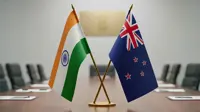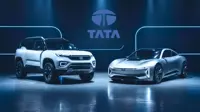Primary issues are back in vogue
By Pradeep Rane | 15 Jun 2002
Mumbai: The message couldn't have gone unnoticed — it was wide and clear. That, there is a healthy appetite for good primary issues. How did it all start? Thank i-Flex Solutions. The spectacular success of the initial public offering (IPO) of the banking solution provider has sparked off hopes of a revival in India's primary market.
How did it all start? Thank i-Flex Solutions. The spectacular success of the initial public offering (IPO) of the banking solution provider has sparked off hopes of a revival in India's primary market.
The issue, which was through the 100-per cent book-building route, was oversubscribed by some 2.6 times. Book-runners received bids for 1.07 crore shares, while the offering was for just 39.61 lakh shares. The response from retail investors was the most conspicuous of all; they came out in hordes with the book-runners receiving 11,000 retail applications — and the retail segment was overbid by 2.7 times. As against an allocation of 9.90 lakh shares, there was a demand for 26.59 lakh shares from the retailers. Curiously, for the first time, all the categories of a book-building issue — institutional, retail and high net-worth individuals — were oversubscribed. In the earlier book-building issues, the retail portion used go under-subscribed.
As against an allocation of 9.90 lakh shares, there was a demand for 26.59 lakh shares from the retailers. Curiously, for the first time, all the categories of a book-building issue — institutional, retail and high net-worth individuals — were oversubscribed. In the earlier book-building issues, the retail portion used go under-subscribed.
Unlike in the earlier issues, where the average application size used to be in the range of Rs 10,000 to Rs 15,000 from the retailer investors, in i-Flex's case the issue applications from the retailers were above Rs 1 lakh.
Even institutional and non-institutional issues received an overwhelming response. More than 25 foreign institutional investors and domestic institutions, including mutual funds and financial institutions, had participated in the IPO. If in the case of the non-institutional category the allocation was for 5.94 lakh shares, the book-runners received applications for 17.33 lakh shares. And the demand from institutional investors was for 64 lakh shares against the allocation of 23.77 lakh shares.
Investors seem to be conscious on the valuation front as most bids were at the Rs 530-range, which is the reserve price for the issue. The offering is now priced at Rs 530. Now everyone is looking forward to see how the shares will fare on the bourses after they get listed at the end of June 2002 on the Bombay Stock Exchange and the National Stock Exchange.
If the shares open at a premium to the offer price then it would go down well with the investor community, which had burned its fingers in the recent years because most IPOs were opened at a discount. A string of high-profile companies are now vying to hit the stock market in the near future.
The success of the i-Flex issue would further encourage them to come to the market. The major companies that have lined up to offer shares to the public include: Maruti Udyog, the country's largest car company; Nalco, Asia's biggest alumina-maker; and Tata Consultancy Services (TCS), India's largest software services company.
Market speculation also points to the probable offers from Hyundai Motors (India); LG of South Korea; domestic oil giants Hindustan Petroleum and Bharat Petroleum; and Hindustan Coca-Cola, a subsidiary of Coca-Cola India. While Maruti plans to raise over Rs 800 crore, the TCS public issue could be much higher — around Rs 5,000 crore.
The primary market in the country was in the doldrums since the time certain fly-by-night operators entered the market in the early nineties. From a figure of Rs 133 billion raised via equity issues in 1994-95, the IPO market collapsed to just Rs 11 billion in 2001-02. Of which around Rs 8.5 billion was raised by Bharti Telecom and the remaining Rs 2.5 billon by other companies.
Several public and private sector banks are also planning to enter the market after the success of the Punjab National Bank public issue. These banks include: Canara Bank, Union Bank of India, IDBI Bank and Lord Krishna Bank.
Domestic fund-raising activity has sharply declined in the number of issues over the past couple of years. The IPO market mobilised just Rs 392 crore from a total of 15 issues in the calendar year 2001. The amount mobilised represents an 82-per cent decline over the Rs 2,165 crore raised in 2000.
The trend reflects a discouraging picture — both in terms of number and fund raising — when compared to 1995 and 1996, which witnessed mobilisation aggregating to Rs 8,686 crore by 1,354 companies and Rs 5,569 crore by 1,126 companies, respectively.
According to Prime Database, a New Delhi-based research firm tracking the primary market, the year 2001 is reminiscent of 1998, which saw a mobilisation of just Rs 314 crore. For instance, some of the last year IPOs like Globsyin Technologies and Ador Powertron had to refund the application money, having failed to mobilise the minimum 90 per cent subscription. Except for the Andhra Bank issue, which sold 2.72 times, the rest of the 12 IPOs managed just about one-time subscription, indicating support from the promoters to pull the issues through.
Incidentally, the retail investors, by and large, stayed away. Besides, they have become nervous about valuations after prices started tumbling down to much lower levels than their offer prices, says a market observer.
In the recent times, the IPO market remained dominated by the ICE (information, communication and entertainment) sector. The most significant absentee sector was the manufacturing segment.
With the falling interest rates and repeated scams, investors now have very few avenues to put their savings to get better earnings. If some good IPOs happen, there would be a greater demand from individual and institutional investors, adding buoyancy to both the primary as well as the secondary market of India.






















